JULIAN DUPONT IN CONVERSATION WITH TRAVIS WYCHE
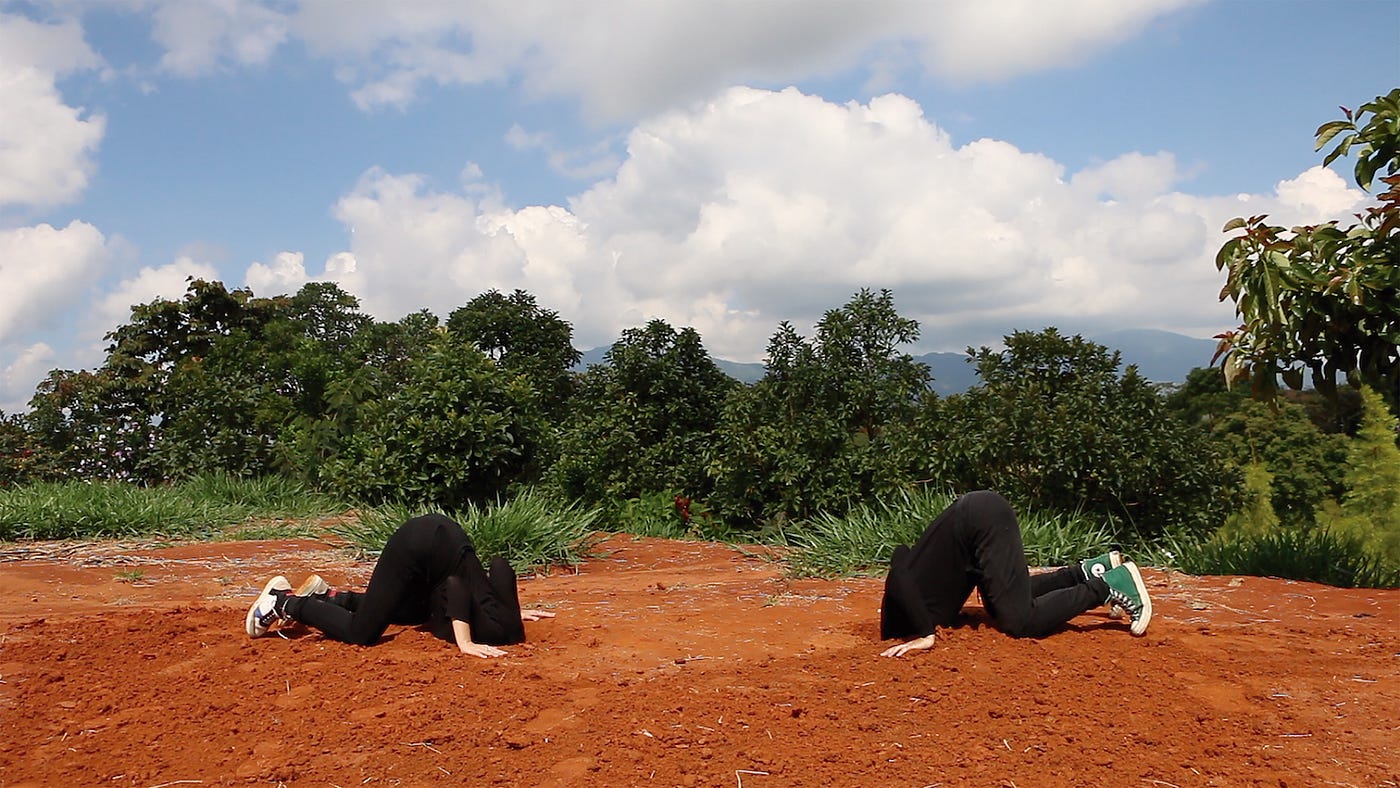
There’s an interesting conversation that emerges when we contrast Eduardo Viveiros de Castro’s Cannibal Metaphysics with Boaventura de Sousa Santos Epistemologies of the South and Arturo Escobar’s Designs for the Pluriverse that points out where we might resolve the potency of Viveiros de Castro’s study of the ontological turn. Escobar openly criticizes the ontological turn as a possible resolution in the Latin American context and opens up the possibility to rethink the relationship between ancestral communities and the formation of our conceptual apparatus by putting anthropology itself into question. Escobar points out that the resolution of this intention is still constructed from the European philosophical tradition in the hands of Viveiros de Castro and presents his ontological turn as a fashionable approach that neglects the real problems of the communities in South America. Escobar constructs (we could say) a more humble position by listening and giving voice to South American epistemologies, integrating them with the Western academic structure; the voices from communities that are giving their life for their cause, rather than contributing to the deformations of the Euro-centralized apparatus that comprise the ontological turn.

Let’s contrast cannibal metaphysics with ontological design.`
This morning, while you were studying me, I was studying you.

I was watching a presentation that you hosted with Clara for the indigenous university where you were in conversation with K Allado-McDowell. The foundation of the talk was How Forests Think and Eduardo Kohn’s notion of perspectivism that was built upon the semiotic work of Charles Pierce. In relation to Donna Haraway’s notion of sympoeisis, this resonates very deeply with me. A lot of my artistic practice has been rooted within Maturana’s concept of autopoeisis, of closed, self-making systems as a definition for a synthetic ecology. N. Katherine Hayles is another thinker who has done some mind-boggling work on autopoeisis and cybernetics, shifting our understanding of nature into something more akin to a cellular automata than an essential natural life force; a metaphysics of transcendence that’s rooted within an image of an essential spirit at the core of being. Along the way I’m thinking about the dissociation of perspective, the horror of the proposition implied in the ontological turn, the cyborgian fantasy of dissociating so absolutely with the world around us that we see even the efflorescence of nature as some kind of algorithmic program; the ultimate Cartesian or Copernican turn where the lens is manufactured to amplify our own biases turned back upon ourselves. While waving the banner of transcendent objectivity, we end up creating an instrument that instills blindness, of ontological obfuscation. We create a filter and perceive the entire world through clouded vision.

Benjamin Bratton was also brought up a few times. This one line in particular that K Allado-McDowell mentioned… When it comes to art, Benjamin Bratton has a way of being rather cynical towards culture, questioning the energy that’s being used in it’s production and dissemination. K Allado-McDowell brought up NFTs distributed through decentralized networks and cryptocurrencies — something that’s very close to home with the community that I’m working with these days — and the increasingly public conversation questioning the amount of energy this system is consuming. Is it worth it in consideration to all the other things that we might be pouring energy into? Now I’m making quite a jump from ontological attention to the usage of energy in the sense of consuming material resources, but I think it’s appropriate.
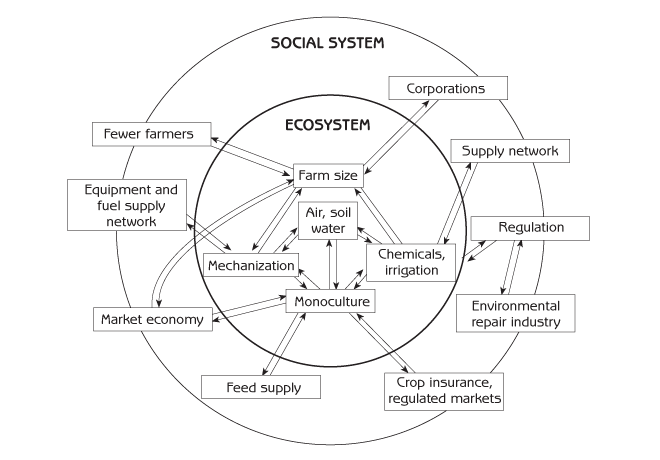
This is the infrastructure we should try to connect. There are so many perspectives that this conversation might entangle. We might evoke the biological and the symbolic that Catherine Malabou is trying to knit towards epigenetics and plasticity to encompass the resolution of a political subject in the contemporary landscape with the embedded problematics of infrastructures like NFTs and cryptocurrency technologies. We have both grappled with Benjamin Bratton’s description of climate change as an invention and as a resolution of the computational infrastructure. Without the computational mega-structure we could not speak about climate change, could not perceive it. How might we put into conversation the principle of symbiosis and sympoeisis with a resolution of the world that is not merely resolved through industrial geoengineering?
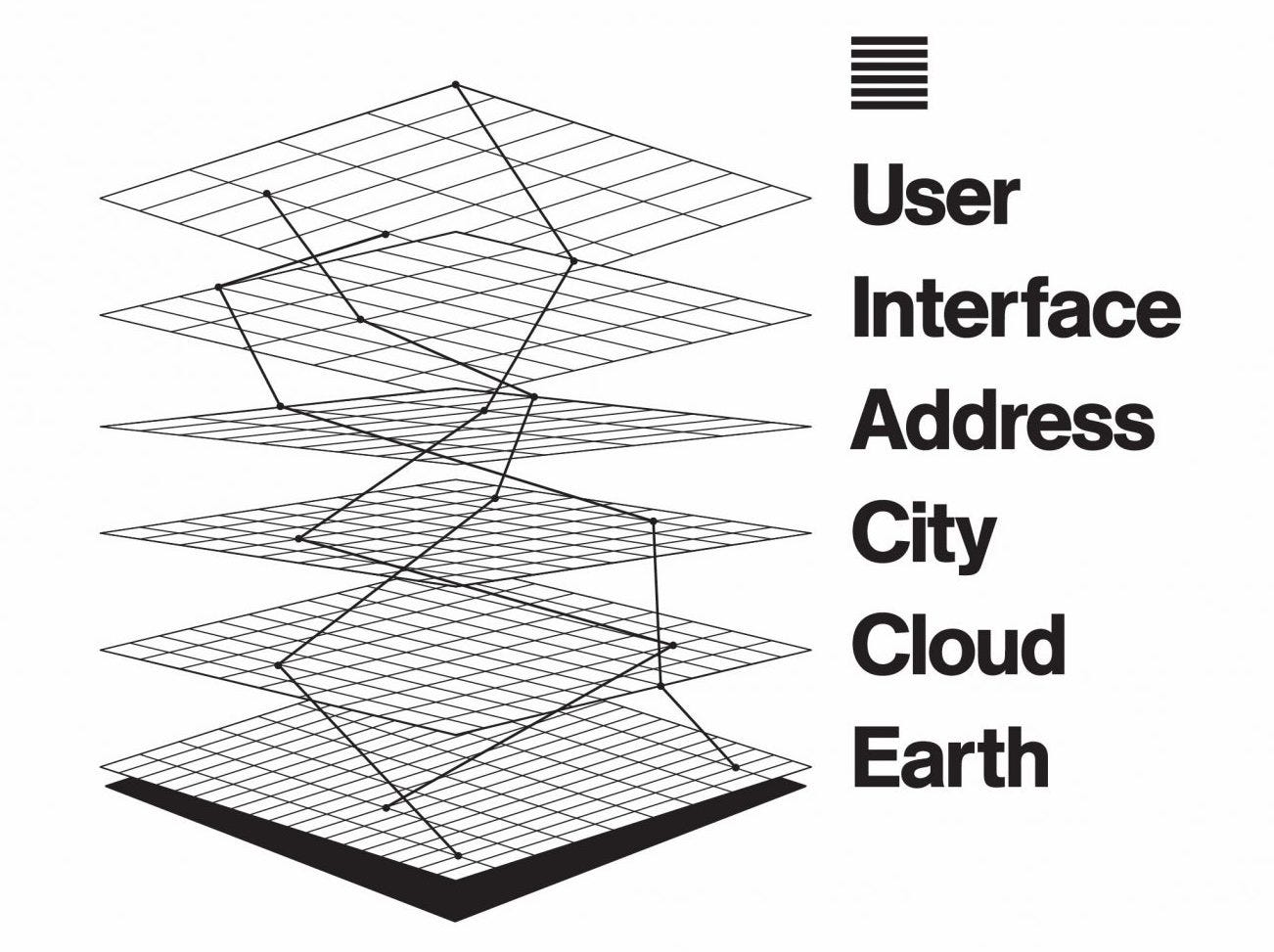
Concerning political sovereignty and governance, we might rethink the constitution of political subjectivities through the landscape that writers like Eduardo Kohn and Donna Haraway have contributed to. With the communities that I’m currently working with in Colombia, when you seek to have a night of conversation with Luis Yunda — one of the traditional doctors of the NASA communities that we’re working with, you spend the whole night not merely contemplating how clouds behave, but observing how the clouds interact with the perceptual system of the body that encompasses ways that oral traditions from the communities preserve, ways that signal material relationality, material resonance, and dynamics between the vegetal and the mineral landscape constituted as a self. The possible resolution of the political subject is opened through the legal possibility of a subject constituted to a vegetal, a plant, a rock… It’s interesting to attempt to resolve that operation, but we must resort to an anatomist projection in the typical anthropocentric manner, like extending human rights to the river or giving human rights to the plants. It is a strategy that has been utilized in Latin America and in some instances it has been effective, but in the larger contextual landscape it cannot work.

The potentiality of what’s opened up with Viveiros de Castro’s multinaturalism seeks to resolve this tension. Avoiding anthropocentric projection, how might we expand our definition of the constitution of the subject as more than merely an affirmation of who we are? I think this has some resonance with your conversation with Jonatan about education. There’s something about resolving ourselves in a way where we are not just the space where we are ourselves, but to encompass, as a way of being, the space where we are more than ourselves. That’s the space where the shamans enter in conversation with the cloud, a space that generates relations and facilitates a type of conversation with the mineral, with the vegetal, that is not based on exploitation, that it is not based on objectification.

How we might think of this projection in terms of the technological point made earlier? The exciting entanglements with the technological infrastructure must not replicate the colonial modus operandis, but might allow us to think the space of the cloud. How might we build our relationship towards a possible resolution of the technological that will — in Benjamin Bratton’s terminology — bring the black stack to come? Bring the unexpected artificiality that we still have not been able to wonder? This shift in the relational landscape and the articulations between cellular relations may bring about the end of the world, in the sense of a potential end of the colonial delusion.
I’m really picking up on your use of a few key terms here. Resolution, for example. At first, I think you were using resolution in reference to acuity, our ability to perceive or to articulate, but then you started using resolution in the sense of resolving, to ameliorate or to alleviate. So in reference to Viveiros de Castro and to Arturo Escobar, maybe we might consider resolution optically, as a visual percept, as the ability to perceive and be perceived as a metric of acuity or precision of that perception. Eduardo Kohn and Donna Haraway introduce a slightly different notion of resolution that is weighted in the semiotic, by the linguistic foundations that imply legibility and identification through the wielding of language. We name by formalizing conventions, akin to projecting a Cartesian plane and erecting an Aristotelian logical architecture. We appropriate diverse meanings into the western Eurocentric canon, integrating them into our epistemological framework.

To render something legible linguistically — maybe this is a third way now — is akin to rendering it accessible mechanically. The implication of Bratton’s conception of global warming is that the manufacture of satellites contributes to the diminishment of the ozone layer, but it’s the satellites launched out into space through these absurd, grandiose industrial schemes that allow us to gain perception of the change to our environment. The manufacture of satellites causes global warming. It’s also what allows us to cogitate global warming. The ontological resolution — in a paradoxical sense — of rendering the world legible for artificial vision shifts our own vision of the world. We see the world as an image, but we mechanically perceive — like Timothy Morton’s idea of hyperobjects — a constellation of ethereal data.

I also want to pick up your use of the word cloud. Whether we consider the clouds that the shaman is interacting with through corporeal and phenomenological means or the cloud as a layer of Bratton’s stack, the cloud becomes a data stream of an amorphous, celestial body of data points, all of which allow us to visualize this hyperobject existing beyond any individual’s capacity to perceive it directly. The other term that I was picking up on is constitution, in the sense of a composition of objects. With your work at the indigenous university and with the shamans, the discussion of how you compose the position of plants in your physical environment is ripe. A particular plant — I think it’s yerba buena — is placed in a little satchel of paper underneath your pillow to help you find sleep. Another plant can be brought into your home, but only for a brief time. It’s good to place it on the desk, because it will cleanse that area, but after two days you need to return it outside or else it will die because you will be inhibiting its ability to cleanse itself. It needs to be returned to the wind so it can dissipate the flow of energy it has accumulated.
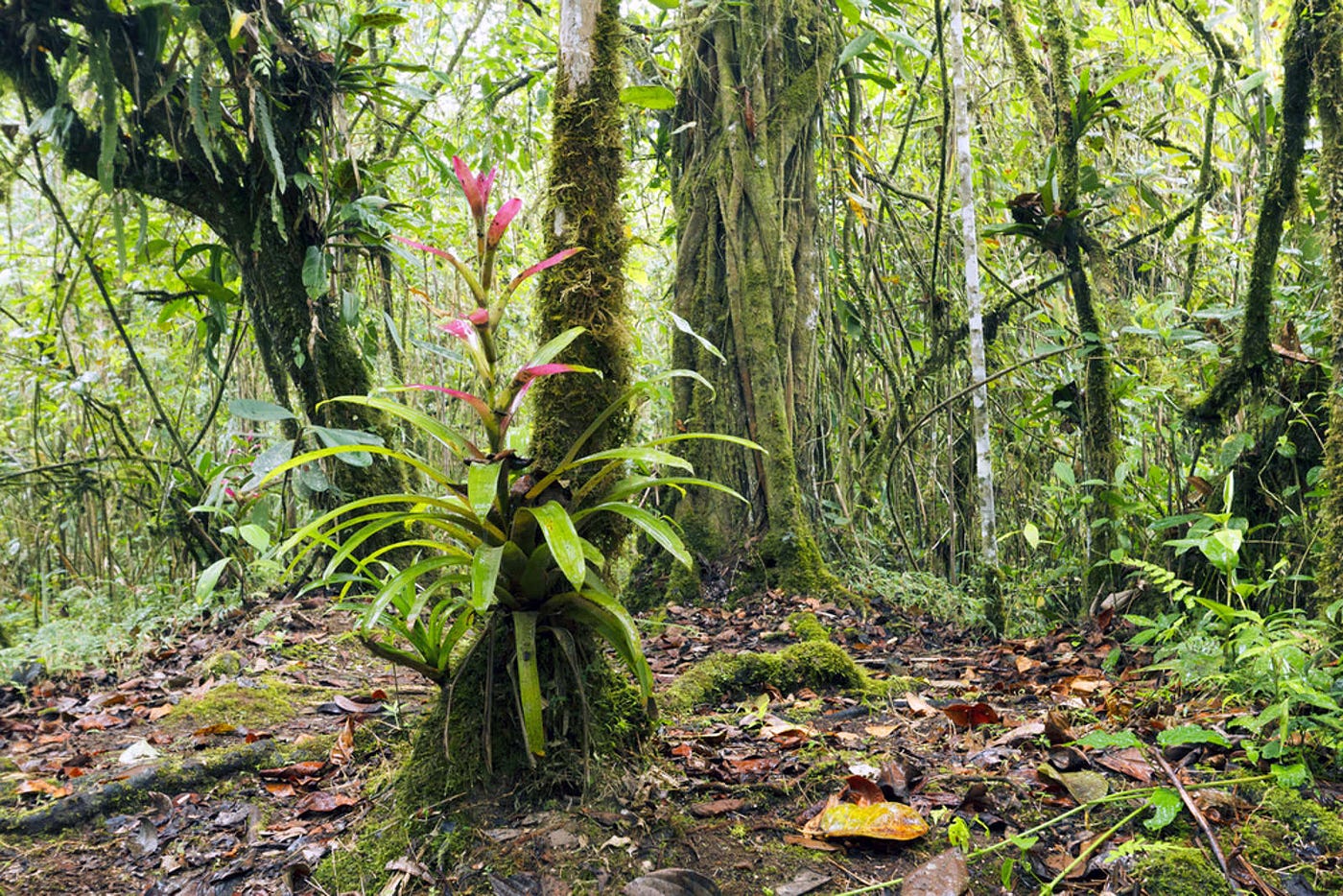
Constitution also evokes a legal document; a document as a body of principles, the ideas that an organization constructs itself around, and the ideology that serves as the fuel for the organizational mechanism. It is the contract that determines and codifies our human relations. It renders us legible as subjects and allows a government to exercise control. A constitution is something that — presumably at least — we would willingly adopt through the understanding that we require this kind of structure to coordinate ourselves. It doesn’t necessarily have to be centralized, but the implication in my mind is certainly centralized. That’s something I want to discuss with you throughout these proceedings. How do these components intermingle to allow us to gain clarity upon governance? Upon what is to be governed and what needs to be governed and the purpose of governance and who might be governing who? How is the resolution — as the visibility and the legibility — and the constitution — as the organization and codification of that organization — wielded as power?
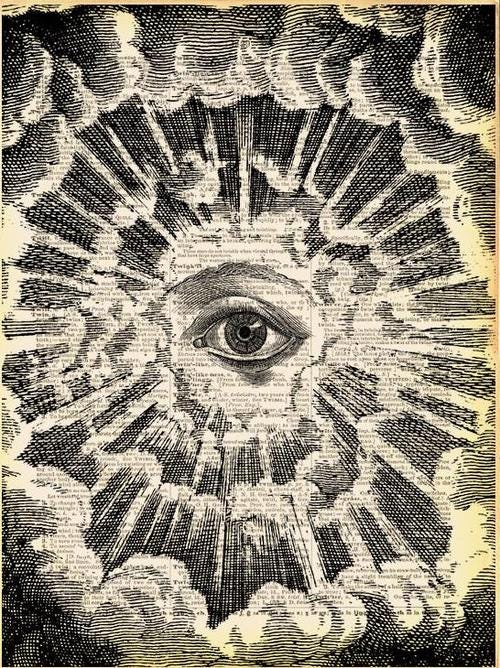
Thinking about resolution as a solution, to resolve a form, will take us towards plasticity as a force that is simultaneously destructing and constructing and an understanding of the embedded relationship between the biological and the symbolic. We might think of the possibility of perspectivism as something that is resolved as a body and a body encompasses the possibility of always-already being multiple. The perspective — and perspectivism — is carried by a body in relation to a visual matrix that in-forms the perspective. From here we might locate the potential emergence of talking with a cloud. We might relate to matter by allowing the possibility of eligibility as a symbolic emancipation, as a resolution of language that places into question how we construct language and how we construct our artificiality.
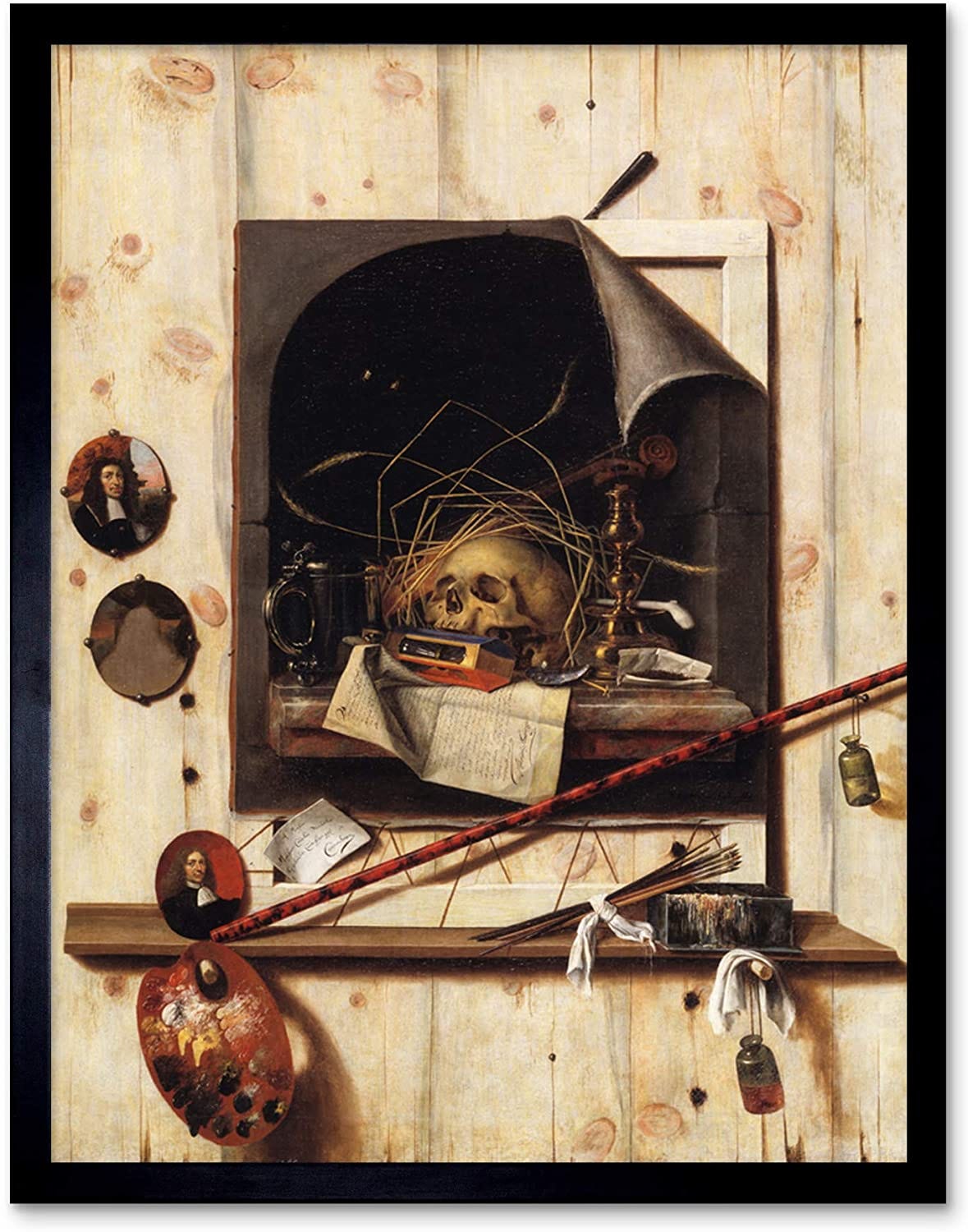
I’ve been thinking about how we relate the position of the artist with the sculpture and with the materials. Evoking the most traditional sculptural materials — defined by the foundations of our Western structure rooted in the Greek perspective — we can think of marble and we can think of David as a performance of mastery over the material. When the sculptor is finished, the arrival to that completed form is the symbolic projection of an abstraction embedded in the material and resolved by the human. From this perspective of giving voice to the subaltern, the mineral is perceived to be cheating in the human form. I wonder if we might wake up the mineral voice of the David sculpture to give us another sense of what a material conversation or language of materials could be. I’ve been thinking about the mountains of Carrara, in Latin America, in Africa — where we source the diverse minerals like marble and coltan — and the dispositifs enabling the infrastructure of the contemporary landscape of computation. How can I relate and reveal the legibility of that mineral world? Or with the vegetal world?

Connecting these two intuitions with the other word that you highlighted, constitution… In the Colombian constitution the indigenous communities have rights to the land. These originary rights state the a priori rights of individuals existing when the constitution was written. In this space, the constitution recognizes that there is a pre-existing right to the one crafting the framework of the constitution. There’s an awareness in the resolution of the project of colonialism that has been resolved in the nation state and all these foundational letters of rights serving as the basis of what today we call democracy. These letters are inherently colonial and for that reason they are inherently patriarchal and racist.

A very potent figure in the contemporary conversation of ecology, named Malcom Ferdinand, wrote a book called Decolonial Ecology. He makes a critique of the contemporary landscape of ecological activism and points out that many of the narratives of political ecological struggle that we have today have been constructed from an asocial vision of nature. Figures like Thoreau or Rousseau describe a sublime relationship with nature from the perspective of a romantic, lonely individual, but at the same time these works were being written there were slaves, a whole economy of slavery. Ferdinand says we cannot think of ecology without connecting it to an expanded notion that encompasses the person thinking through possible resolutions of what the problems of ecology are. If today we’re still focusing on creating technologies that are still trying to solve a problem without putting into question our own position and our own infrastructure creating the very ecological inversion we are trying to solve for, then we’re the same as Thoreau, the transcendentalist, not acknowledging the slavery of his own moment.
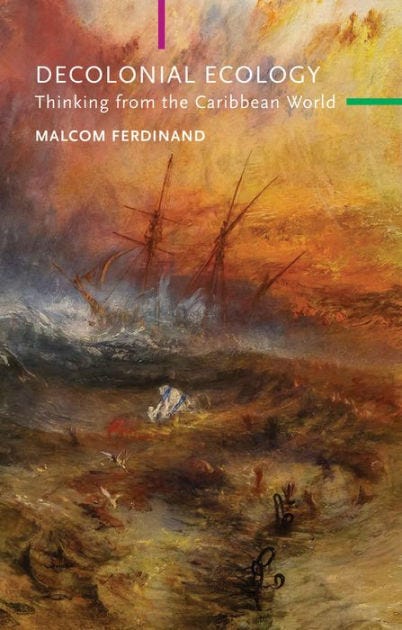
How can we think about the right to land? We might consider the landscape that the NASA communities, the Yanakuna communities, the Kokonuco communities — the indigenous communities of Colombia — have as a relational landscape, a landscape that we will need to encompass in forming our own resolution of our relationship with the artificial. If we can manage to think beyond extending technologies, to repeat the same relationships with our world, in order to encompass a possible reconstitution of our relations with the land, we may witness the emergence of an artificiality formed through relationship with the mineral. The relationship with plants that the shamans have in the department of Cauca is a very powerful dialectical system in approaching those potential spaces.

In Davi Kopenawa Yanomami’s book, The Falling Sky, he talks about “far away thinking” as a configuration that encompasses the user’s identity with the subject. In the first chapters of Yanomami’s book he talks about the naming of an individual in the Yanomami community. When you are born, as children, you don’t have an immediate name. The father calls you son and that goes on for a few years until the uncles or the neighbors start to use a nickname, like “the one that cries” or “the one that yells” or “the one that runs faster.” It doesn’t arrive as an affirmation of your identity, but arrives from a resonance of the relations embedded in the social constellation. When you grow up, the “enemies,” or other people from the community that want to insult you, will call you by your name. When you arrive at a place and you are called by your name, that’s an insult.
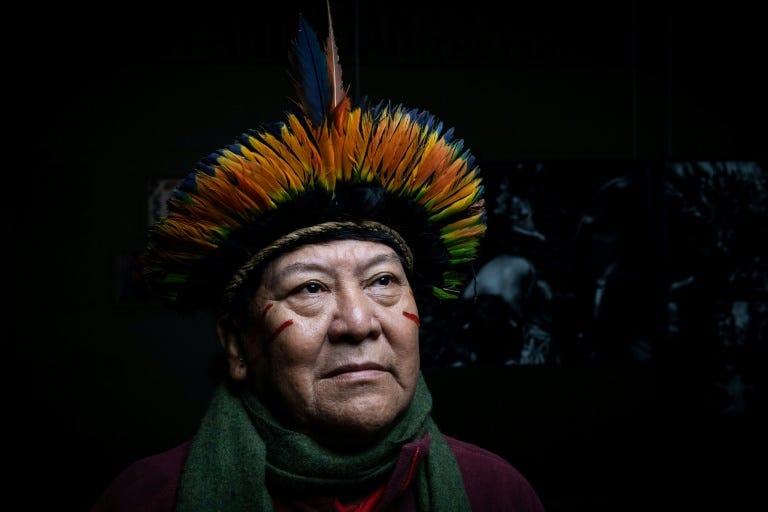
I don’t understand why. Why is that insulting?
How you construct the configuration of relations doesn’t come as the imperative self, as an imperative colonial movement, like “I’m going to conquer something.” There’s an inverse rejection of the affirmation of our way to understand selfhood, thrown at the other as a negation of selfhood, as an insult. The author gained the name of Kopenawa through a space of dreaming after ingesting a few sacred plants. The plants told him that he needed to go and take a position against a multinational corporation that was claiming territory on the land. How he was named was arrived at through the space of dreaming, rather than the configuration of rationality and affirmation. This might serve as a possible reconfiguration or rearticulation of how we could conceive emancipation from the contemporary technological infrastructure, that it’s not just resolved through privacy extended to the user. What image might put into question the affirmation of selfhood and provide an image of emancipation that will not be received as — perhaps the most important value of modern society — a defense of the individual? How can we think in other images or in other potentialities to open emancipation beyond the imperative of the individual?

It sounds to me like you’re describing a practice of radical imagination, a need to think of other images in order to shift our orientation to ourselves and to each other. I want to return to the idea that you brought up earlier, but maybe we will find our way back to this call that you’re making, this need to reorient ourselves.
Let’s talk about your use of perspective. I’m a little confused about something, so maybe you can help me understand the particular usage of perspective by Viveiros de Castro and by Eduardo Kohn. With my background in the fine arts, focusing upon painting and drawing, I associate perspective with a technique. Perspective allows us to render a three dimensional world, or even a fourth dimensional world, upon a two dimensional surface. It’s a technique to manipulate materials to create the illusion of space. In terms of phenomenology, perspective is one’s position, the physical positioning in physical space that creates a point of view. It’s also a demeanor, the position of a being. Your perspective is the combined idiosyncratic characteristics of your history of engaging with the world; your accumulated experiences, the forms that mold an outlook of relations, your attitude in relation to something else or to someone else, a way of regarding something.

Next, there’s the anthropological notion of perspectivism, which I understand as the theory that our way of knowing or the knowledge that we have of the world is inherently biased and that our awareness of the world is limited to our individual biased perspective. The way that I hear Eduardo Viveiros de Castro and Eduardo Kohn utilizing this term in relation to an ontological pivot or ontological shift is by embracing the idea that we might perceive collectively, or from a decentered sense of self; that we might perceive from multiple points of view, a simultaneous multi-perspectivalism. This is where I get a little confused, because I think I remember Eduardo Kohn using perspectivalism in opposition to Vivero de Castro’s use of perspectivism. Maybe this is an innocuous semiotic slip, or maybe this is just me remembering incorrectly, but I believe that Eduardo Kohn’s notion of a multi-natural perspectivism regarding the shammanic view is described — building off of Charles Pierce’s structural semiotics — as a point of view determined by our frame of concrete reference. It depends upon that frame, which is a subtle, but maybe important shift in that our subjectivity or our identity becomes the frame of the world that we perceive and the instrumentalisation of our perspective leans into a Copernican optics of the instrumentalized gaze of — not just the eye as a mechanism, but — perception as a technology.
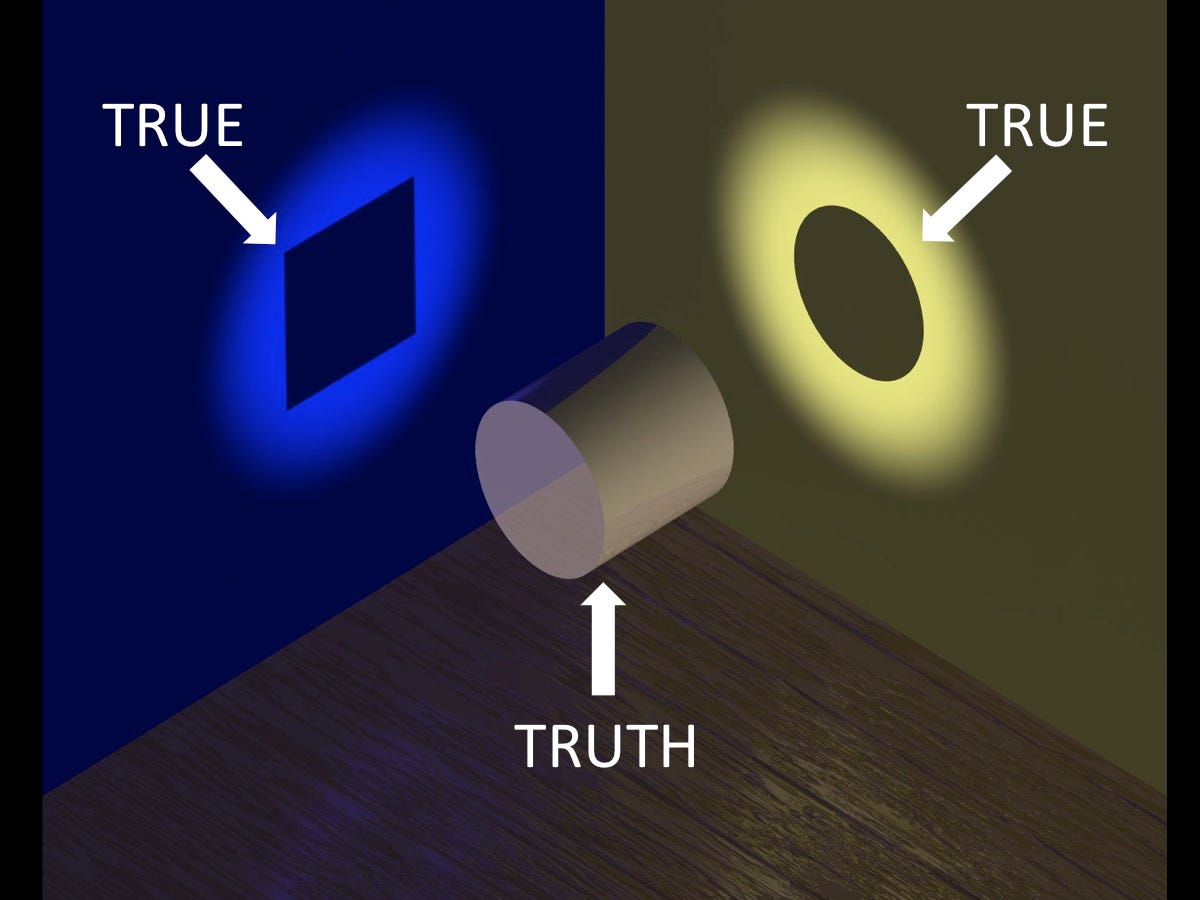
Then you were approaching these very important notions of decolonising ecology. This is an important idea and also a very problematic idea. We are using ecology here — and correct me if I’m wrong — to reference the networked interconnection of things in the natural world, almost as a synonym for nature, for the world, the Umwelt, as the space of beings relating. The problem — or the paradox — in my mind is that ecology itself is an idea that emerges out of cybernetics; the information theory and network theory has grown out of a technological and industrial engagement with the world that denaturalizes it, dissociates us from immediate relation with the natural. To take a few steps back even further, we could say that nature is a synthetic concept, an anthropocentric idea of framing the world, which comes out of 17th century Enlightenment proto-modernist notions.

Cybernetic ecology understands our relations through their relationality, through the connections forming into a framework, but this is still a continuation of a mechanistic delusion that we impose upon the world. A dispositif, to the extent that I understand it, illustrates the networked or cybernetic relationships of the infrastructural components; the institutions and the ideologies that drive them, the bureaucratic mechanics and the epistemic archive-architectures, and how they are related in the manufacture and maintenance of power and control. Michel Foucault’s idea of the dispositif is that this infrastructure creates the potential of control and maintains that control. This is a system almost at the scale of the cloud we were ruminating on earlier; almost a hyperobject, something that an individual might not be capable of perceiving alone. Collectively we manufacture the dispositif and we are subject to it, in as much as we participate in it.

I align very wholeheartedly with your call for us to consider how we are aligning and to attempt to realign, to try to account for the histories that we’re drawing upon and help each other achieve the resolution of understanding of what those histories are while also continuing to strive for this other sense of resolution, to create solutions to ameliorate. Another sense of the term solution might be as a liquid substrate, that we might dissolve ourselves into the collective solution. The paradox for me is cybernetics itself. It seems we are practicing it even now, to the extent that we are attempting to practice a transdisciplinary approach entangling all of these concepts into a unified methodology for how we might unthink ourselves or think ourselves differently.

I know that your work focuses heavily on identity production and this is absolutely at the core of this issue. As we craft our subjectivities, and as they produce material identities, we are constituting ourselves; we are forming constitutions of social, collective, communal organization. Then we imbibe these organizations with autonomous rights, as is the case in forming LLCs, or multinational corporations that territorialize the rainforest. When the material protrusion of identity surpasses our ability to constitute it, we become victims of the dispositif and the multinational corporation takes on a life of its own and it no longer must consider the best interests of the local people, who become victimized by the globalized industrial process. The paradox is that the multinational corporation can proclaim that it is attempting to extract resources as a public good for the betterment of all humankind, and yet right at the threshold of their operation there are people suffering under that same production.

In response, I will focus on the nexus of perspectivism, dispositif, and what you mentioned as identity production. I would like to start with identity.
What resonates as the landscape that is more difficult to embrace, but where I see potential, is with my reading of Paul B Preciado and Emanuel Rozenthal, a social leader and activist that we’re working with in Colombia and member of a collective that is called pueblos en camino, which roughly translates to the people walking the path. We might also trace a path back to Franz Fanon via his work Black Skin, White Masks. This notion of identity is constructed from the emancipatory space for indigenous communities, or for black communities in the case of Fanon. The general image of identity does not affirm the notion of indigenous. Affirming ourselves as indigenous as an identity is already encompassed in and validates the frame of a colonial word that has been imposed on the people. The root of indigenous came to differentiate local inhabitants of the land from the imported slave population. Indigenous is not a term that originates from the communities.

Manuel Rozenthal’s position on the emancipation we need to achieve, paraphrasing Franz Fanon, is not a need to affirm our indigeneity to win rights, but to stop being indigenous in order to become something other than that imperative of identity. Quoting Fanon, “I don’t want to emancipate myself from being a black man, I want to emancipate from being a black subject.” Paul B Preciado discusses the ego configuration of homosexual marriage. For him, the creative and critical space to come will not consist of fighting against the state to win a legal base for homosexual marriage. It’s not about asking the state, the patriarchal force, “let me belong.” We will not win spaces of emancipation still embedded in the framework of gaining recognition by a modern set of values. Instead, we should be thinking how we could desire in a different way that will not be resolved by the modern state apparatus.
Regarding identity, these positions have much more strength than the affirmation of an identitarian set of values. There’s strength in these positions because they don’t come pre-resolved as identity politics. To question identity politics is to question the configuration of multiculturalism that we have. Here might be the bridge to perspectivism.

We arrive at this term — derived from painting and the history of the construction of a point of view — of an image. It’s not antagonistic from the notion that is taken up by Viveiros de Castro. The way we relate to a perspective, coming from a space of interpretational relativism, is how different types of beings see the same thing in a different way. You have your interpretation, I have my interpretation, and the basis of our conversation is given by a nature that we share and a culture that gives the space for difference. The representation of difference is very different from inherent difference, of constant variation as difference. The opposite of the construction of how different types of beings see the same things in different ways is how different beings seeing different things in the same way operates. This creates an understanding of the difference between you and me seeing different things, in that what we share is the way in which we see them in the same way. We share this with the spider, we share this with the Jaguar, we share this between ourselves. When it changes — not the interpretation, but when difference is located in your body as a multiple nature — the articulation of difference doesn’t come solved through culture, doesn’t come resolved through our image of language, but it comes inherent in the articulation of that multiple nature that is already your body. This is how different beings seeing different things in the same way operates.

This might resonate with what you were describing in cybernetics as a field of relations or a matrix of relations. More than just sharing a code, our relations are embedded in the body, and this brings the possibility of language. This is especially apparent when you don’t share the linguistic codes of the other person. The emergence of the understanding of communication doesn’t come from the same coded perspective, but comes from not speaking the same language of the other. This is how Viveiros de Castro brings in the notion of cannibalism, as the importance of the enemy. Whereas shamanism is the dialectical frame of non-friendship, a constant articulation that is creating those relations to the enemy to gain comprehension and to gain what is being constructed as a life lived dynamically in the radical difference.
With Eduardo Kohn, we find the concept of equivocity. It’s about constructing a matrix of language — not from the affirmation, but from the equivocal space of articulation that resolves the word in a different way. Multinatural perspectivism encompasses the potency of an inversion of anthropocentrism with the space of myth. The Jaguar and the shaman share a space where they can talk as humans. The constant state of multiplicity, the constant state of variation, is what the shaman learns how to master. The key here — that you have put into question — is in understanding that presenting the human as the space that we share with the animal or with the vegetal world paradoxically will not be an anthropocentrism, but will be the possible configuration of a system of relations that — when everything becomes human — the human become something else.

In your conversation with Jonatan, you discussed the construction of the spaces to come, in terms of education. Connecting this to identity, there’s something about growing in that space where we become someone other than ourselves. It’s a constellation that I find very powerful: how to think — not a space of animism, but — a space of myth in the contemporary landscape that will not be a joke and will not be a metaphor. The system of relations that the shaman is using to cure a sick body is not a metaphorical body. It’s a material articulation of relations-as-bodies that forms a political position and allows us the possibility to think-as-relation from a point that Western dialectics has not been able to recognize.
I find that there’s something hugely significant about the condescending nature of the interest that a museum might have in these conversations, or that academia might find in these conversations. There’s something that needs to be unpacked concerning what Eduardo Kohn refers to as the provincialization of language, about how these forests are in communication with ancestral traditions, as an end to the world of modern systems of articulation, and how to think about the possibilities to gain governance and the articulation of technological landscapes from those structures.
This series is made possible by a generous grant awarded by MolochDAO. Thank you Moloch!